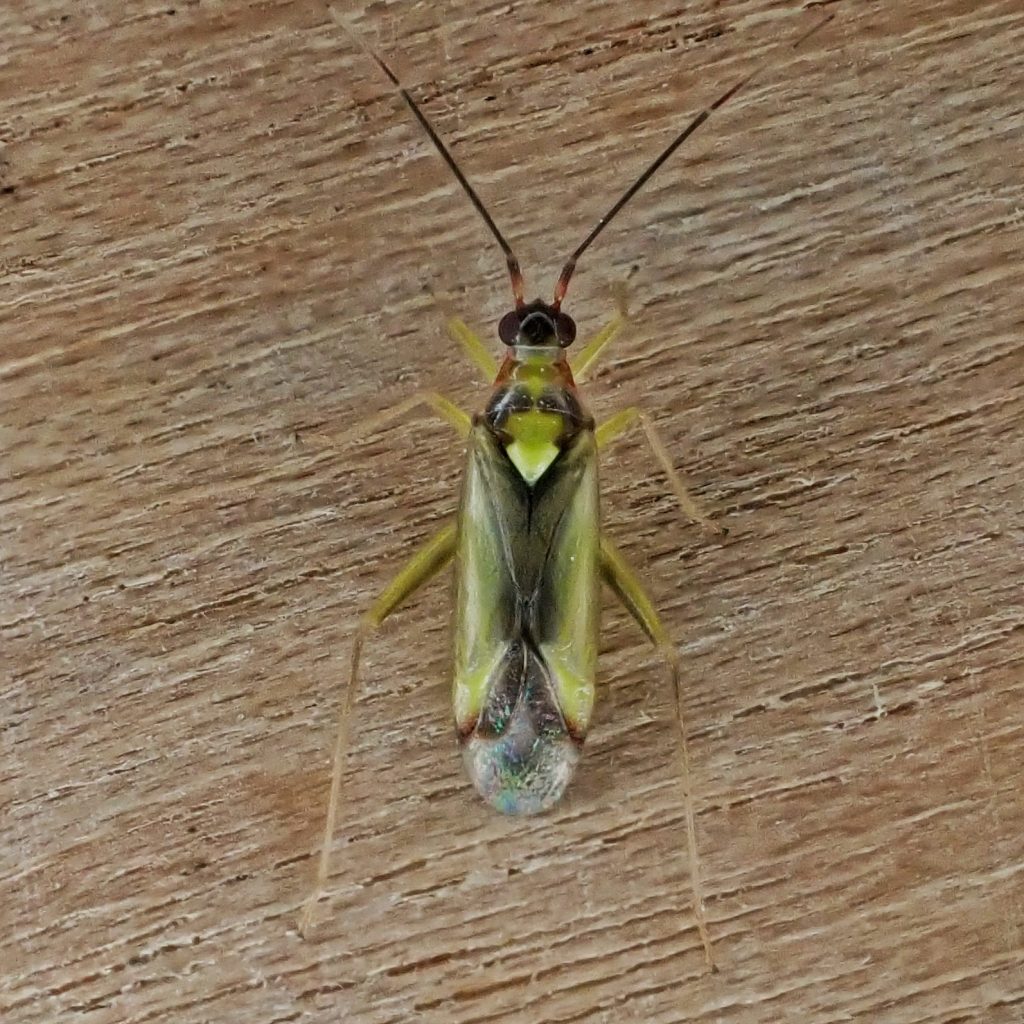
This was another interesting yard bug that I found when I tagged along whilst Pam watered for her friend. There were several of the adults, as well as quite a few much smaller nymphs, on the leaves of an ornamental maple. I was by no means certain that the nymphs and the adults were the same species, but their close proximity made it seem possible. I couldn’t find anything close in Pacific Northwest Insects, so I plugged a photo into my Seek app and it called it Campyloneura virgula. And when I went to BugGuide to see if that looked right (which it did) I also found nymph pictures that were dead ringers for what I’d found. But I still wasn’t convinced until I found a paper (Henry; 2012) talking about the first eastern North American records for this species, which described it to a T, and said nothing else had that set of characteristics. I apologize for the poor quality of many of these photos. Besides inevitable pilot error, I believe the translucent hemelytra confused the focus sensor in my TG6.
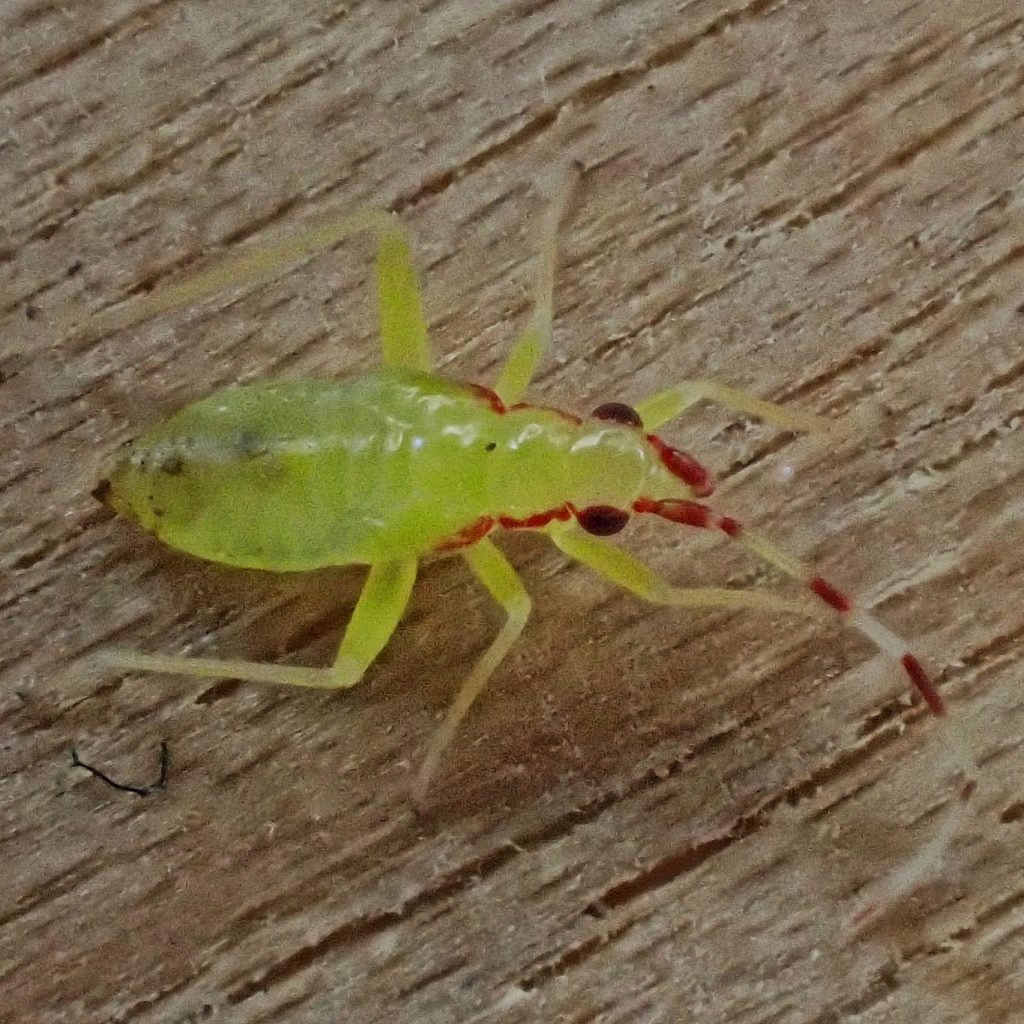
This little Miridae (plant bugs) is a good, albeit non-native, friend to arborists and gardeners, since both nymphs and adults prey on aphids, mites, and barklice. But since I’m neither of those things, what I found most fascinating is that these bugs are parthenogenic, and produce females almost exclusively in North America and Europe (some populations in North Africa have a 1male/2 female ratio and apparently reproduce, at least in part, sexually). This doesn’t appear to be a Wolbachia infestation like the one governing parthenogenesis in the woodlouse Oniscus asellus, but instead it’s just a matter of egg cells dividing and growing by mitosis rather than meiosis, with no need of fertilization. I wonder if Ray Trout could make them a really tiny T-shirt saying ‘a woman needs a man like a fish needs a bicycle’.
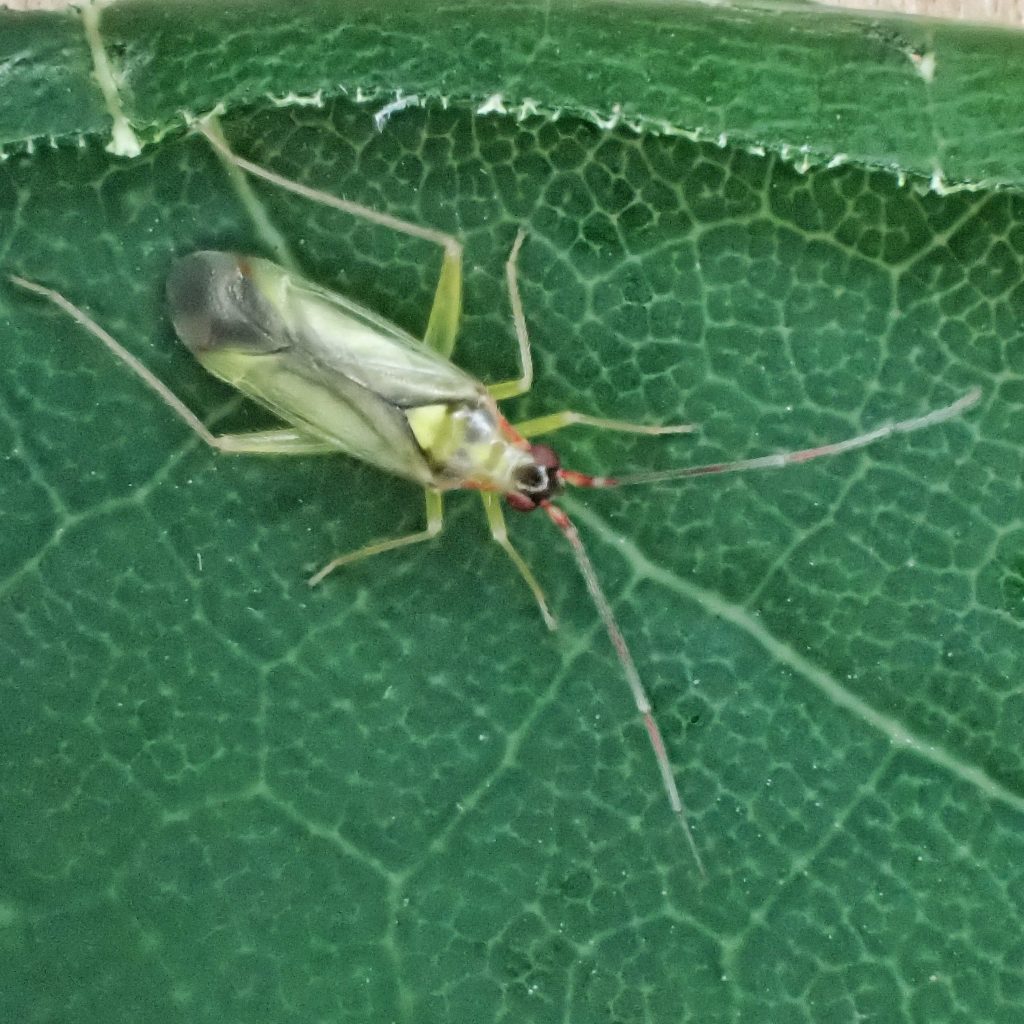
Description-Small (4-5mm) true bug with a black head, red, banded antennae, a pale or white collar, clear hemelytra, an orange band at the front of the pronotum, a yellow scutellum, a yellow cuneus, a pair of brown spots near the tip of the greenish yellow abdomen, and pale yellow legs; nymphs are yellow, with a red mark on the side of the pronotum, dark eyes, and black and white banded antennae.
Similar species– No other Miridae in North America has this combination of characteristics
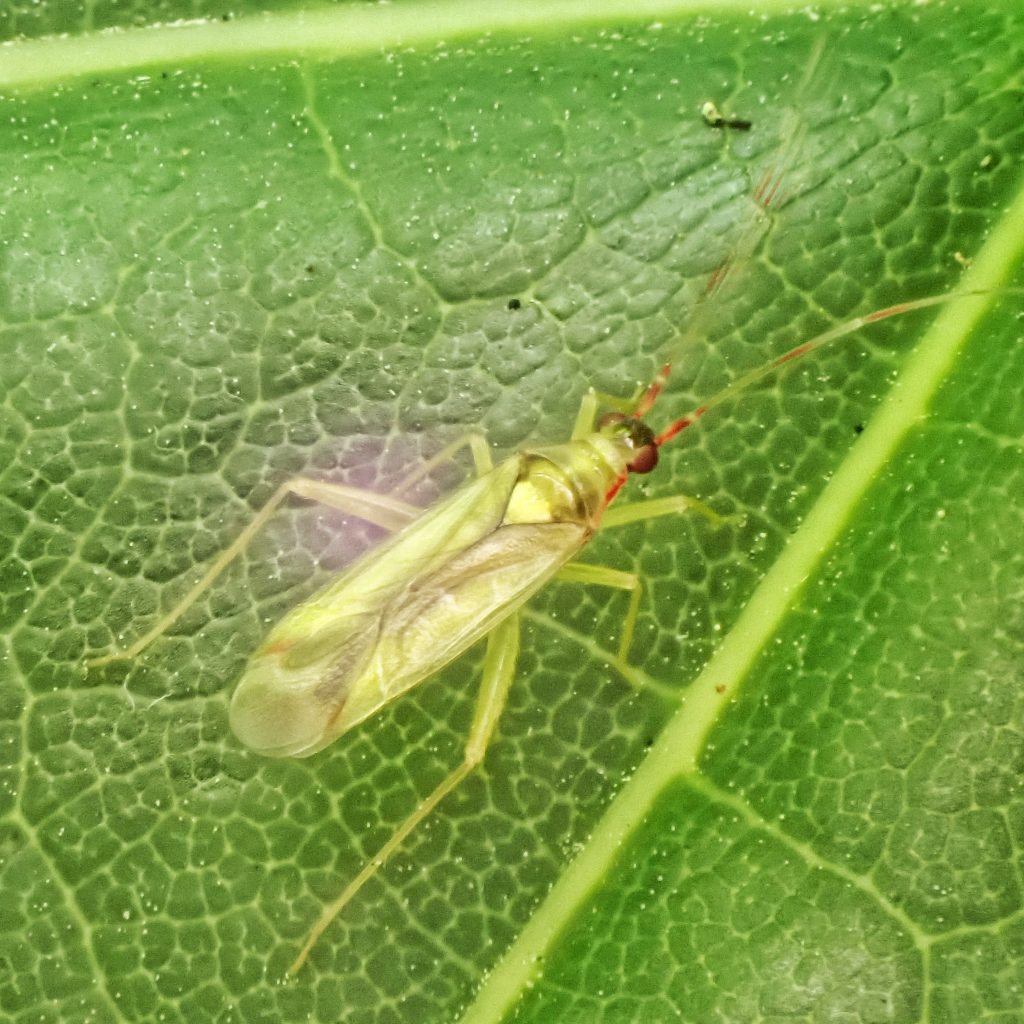
Habitat– Moist to mesic forests and woodlands, and trees urban/suburban areas, mostly at low elevations; known to be found on maples, alders, holly, scotch broom, hazelnuts, apples, and nettles, amongst others.
Range-Native to Europe and North Africa, and adventive (introduced but not fully naturalized) on the east and west coasts of North America; thus far only found west of the Cascades and in sw Oregon and nw California in our region.
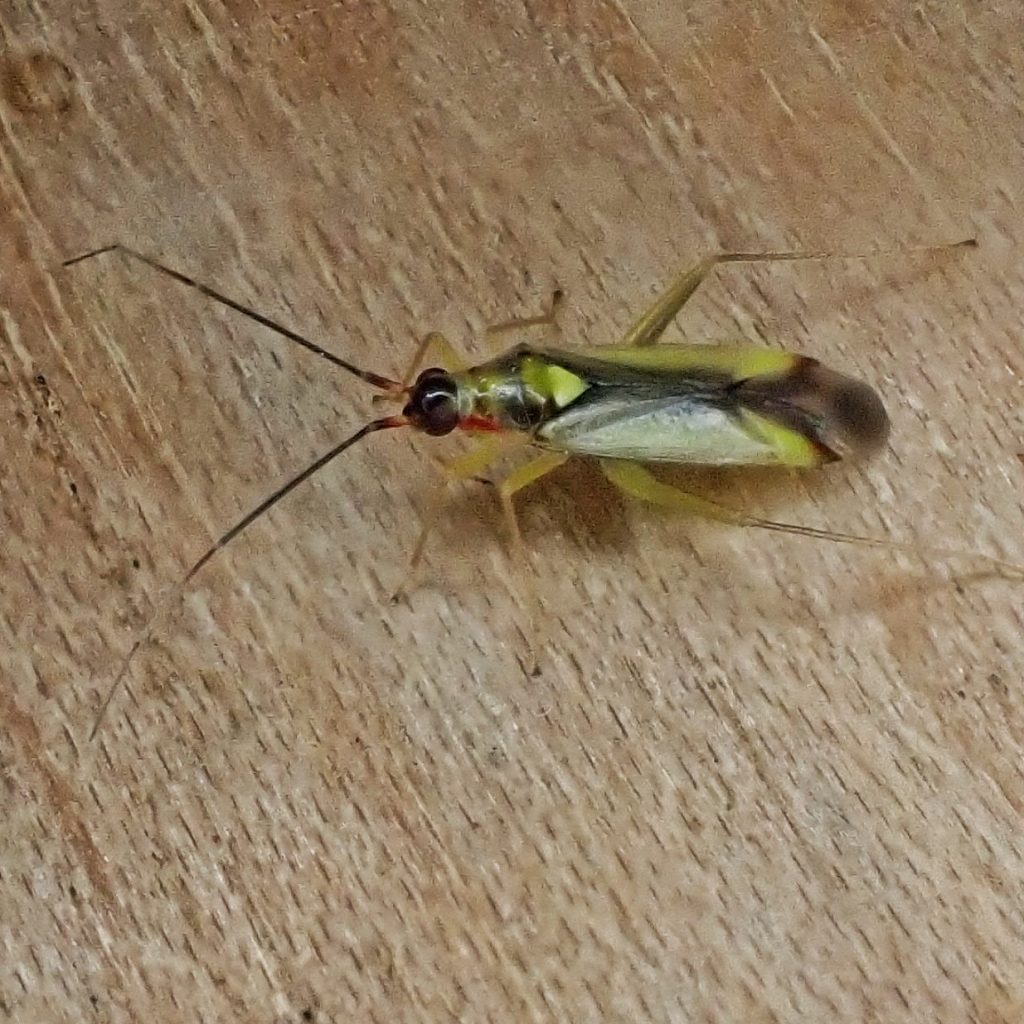
Eats-Adults and nymphs feed on aphids, mites, barklice, and other tiny invertebrates
Eaten by-Probably insectivores of all classes
Adults active-May to October
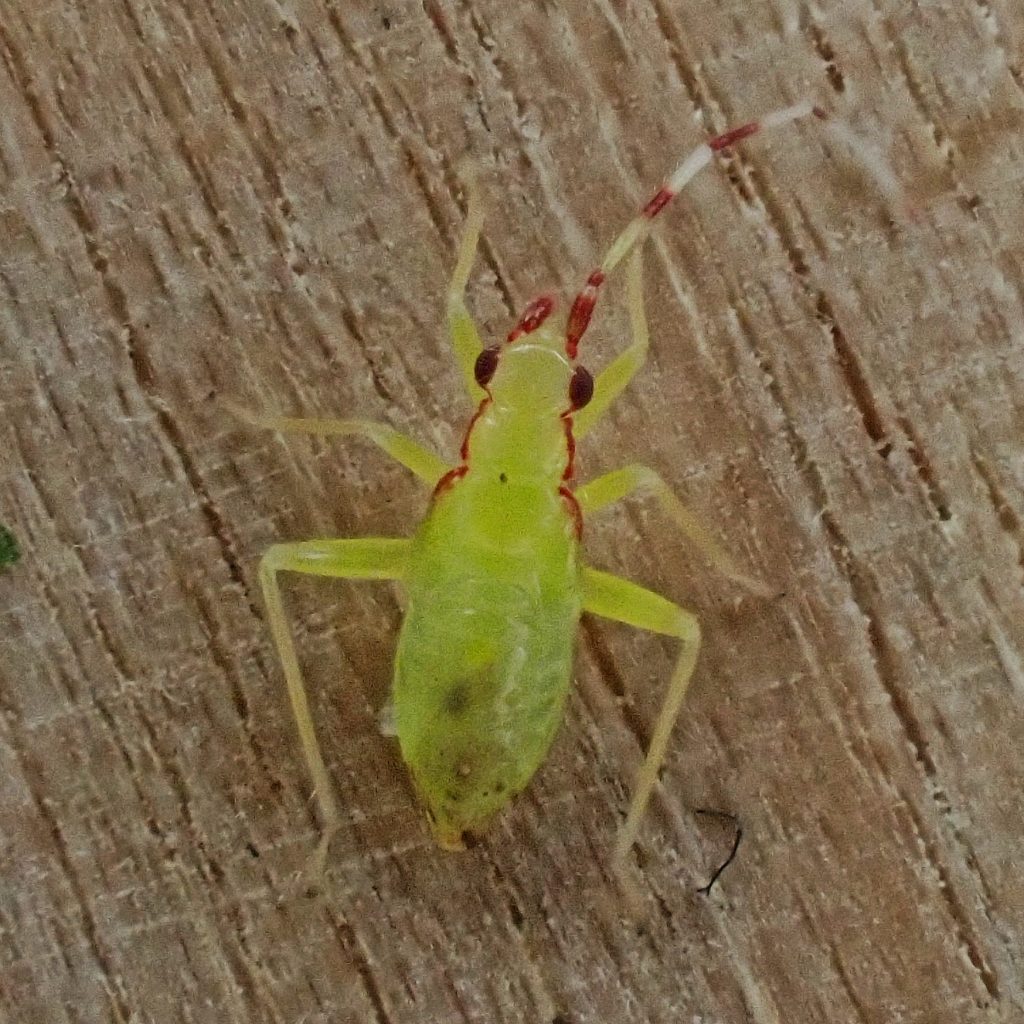
Life cycle-Primarily parthenogenic, and males are rare; overwinters as eggs or adults, but not as nymphs.
Etymology of names–Campyloneura would appear to be from a combination of the Greek word for ‘bent/curved’, and the Latin word for ‘sinew/tendon/nerve’, but I cannot ascertain what curved sinew this references. The specific epithet virgula seems likely to be from the Latin word for ‘small twig/sprout’, but again I can’t find corroboration, or what it may reference.
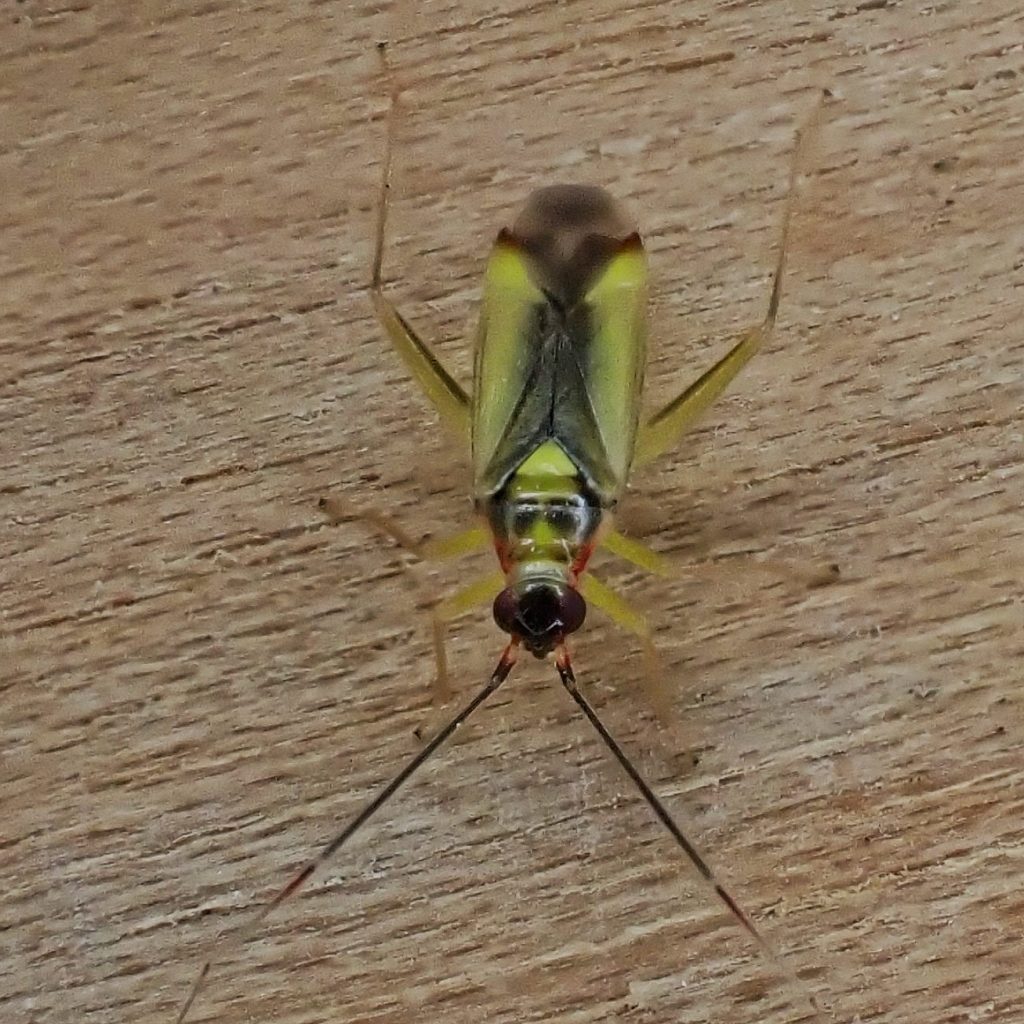
https://bugguide.net/node/view/235289
https://www.jungledragon.com/specie/13135/campyloneura_virgula.html
https://www.britishbugs.org.uk/heteroptera/Miridae/campyloneura_virgula.html
Oniscus asellus – 10,000 Things of the Pacific Northwest
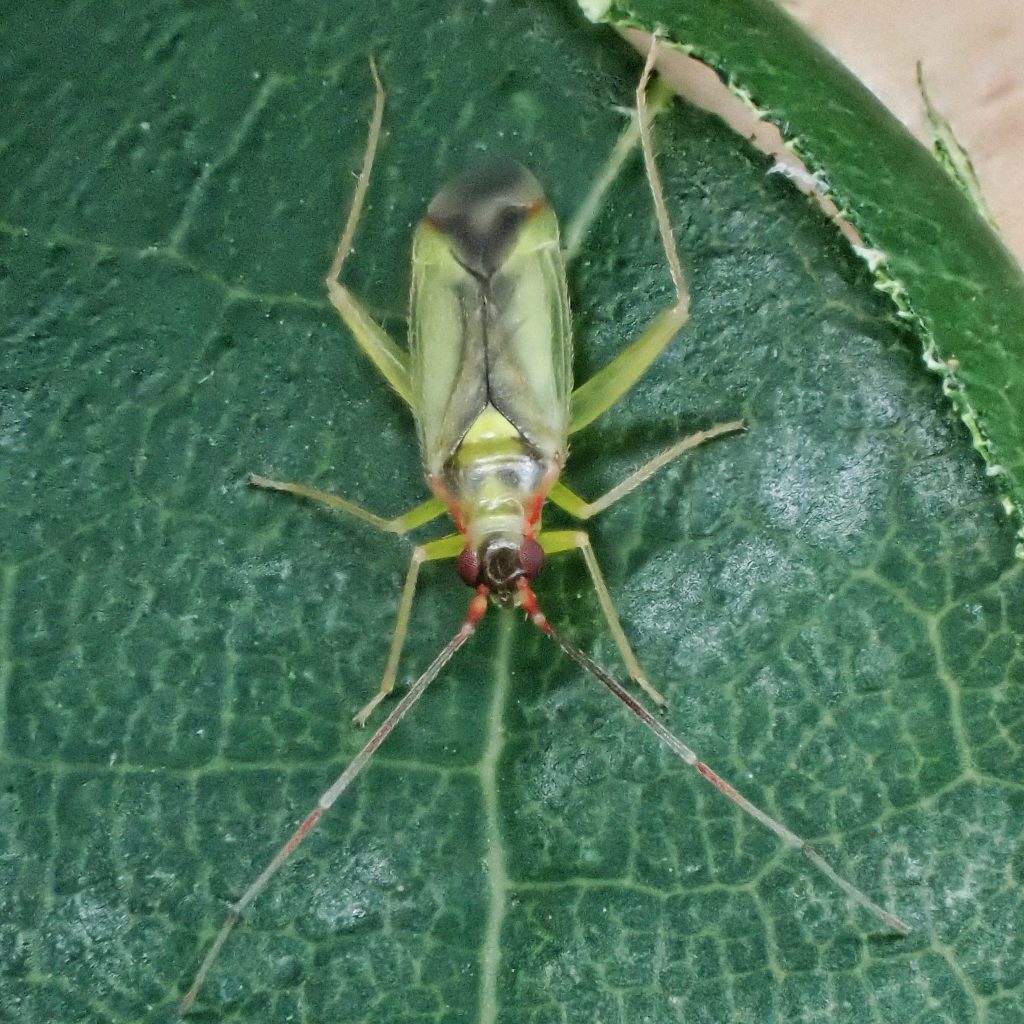
Fascinating research findings! Thank you
Thanks for your appreciation!